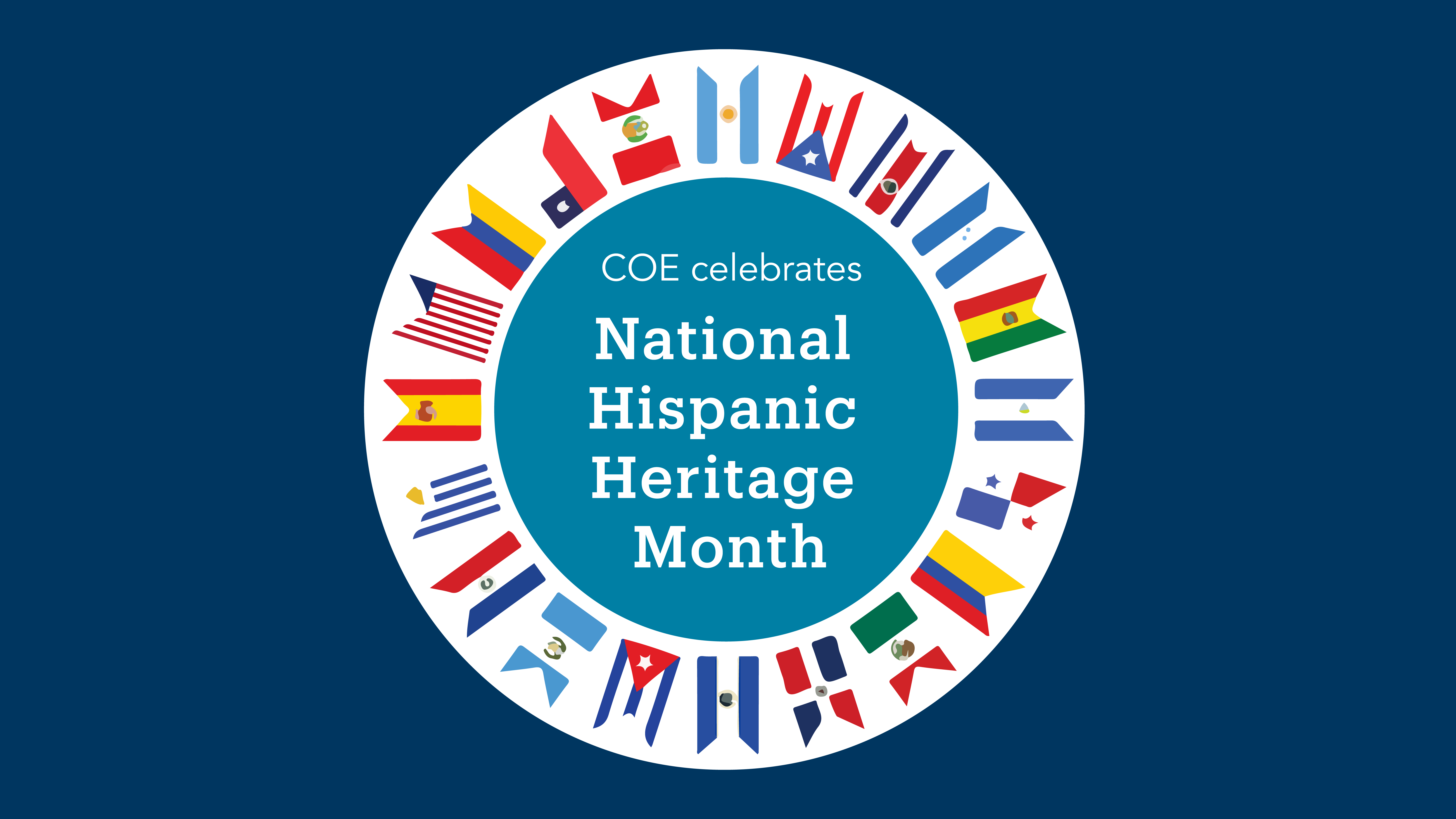
National Hispanic Heritage Month
Each year, Americans observe National Hispanic Heritage Month from September 15 to October 15, by celebrating the histories, cultures, and contributions of American citizens whose ancestors came from Spain, Mexico, the Caribbean, and Central and South America.
The observation started in 1968 as Hispanic Heritage Week under President Lyndon Johnson and was expanded by President Ronald Reagan in 1988 and enacted into law to cover a month-long period, starting on September 15 and ending on October 15. The day of September 15 is significant because it is the anniversary of independence for the Latin American countries Costa Rica, El Salvador, Guatemala, Honduras, and Nicaragua. In addition, Mexico and Chile celebrate their independence days on September 16 and September 18, respectively.
To commemorate National Hispanic Heritage Month, the College of Engineering at UC Santa Barbara is recognizing and celebrating members of the Hispanic and Latinx community who have made or are currently making remarkable contributions to engineering and related STEM disciplines while inspiring others in the process. We believe that diversity is truly indispensable in the college and that richly varied perspectives and lived experiences enhance creativity and innovation, leading to better engineered solutions. Here, we shed light on some inspiring members of the COE and greater Hispanic and Latinx communities.
We Are Proud to Honor
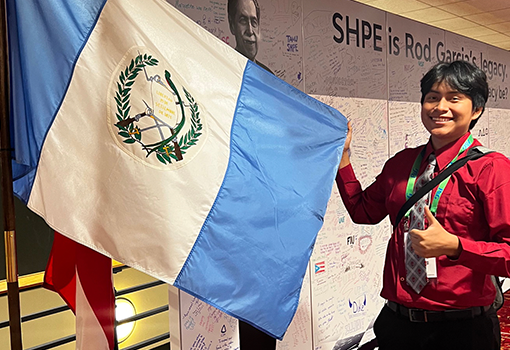
Kevin Barrera Mejia is a fourth-year mechanical engineering major at UCSB. A first-generation college student, he is also a UCSB Promise Scholar and a Hispanic Scholarship Fund (HSF) Scholar. Barrera Mejia is serving as co-president of Los Ingenieros (LI), the UCSB student chapter of the Society of Hispanic Professional Engineers (SHPE), which offers professional assistance for STEM students and serves as a great opportunity to make friends, connections, and earn scholarships. During the past summer, he attended the HSF’s STEM Summit, an event that united college students from across the nation to gain insight on their future careers. Barrera Mejia, whose parents grew up in Guatemala, also mentors another mechanical engineering student through the L@s Guias Mentorship Program. He feels that observing National Hispanic Heritage Month is especially important to show members of the Hispanic engineering community that they are not alone at universities and that there will always be people who support them. Barrera Mejia plans to pursue a career in the energy or sustainability field after graduation, areas that he became interested in after watching Doctor Octopus try to create cheap renewable energy in the movie Spider-Man 2.
Andrea Capa Salinas is a third-year materials PhD student at UCSB. An international student from Ecuador, she earned a bachelor’s degree in physics from CSU Fresno, where she also received the 2020 Distinguished International Undergraduate Award. While an undergraduate, Capa Salinas explored various areas of research, such as electrical engineering and computational physics, before becoming enthralled by condensed matter physics. Advised by UCSB materials professor Stephen Wilson, Capa Salinas works in the field of quantum materials that have geometrically frustrated structures. The real-world implications of her research involve synthesizing materials for energy-efficient devices and efficient memory storage. As an engineering student, she says that she is proud to celebrate National Hispanic Heritage Month and recognize members of her community succeeding and embracing their backgrounds despite the systemic challenges.
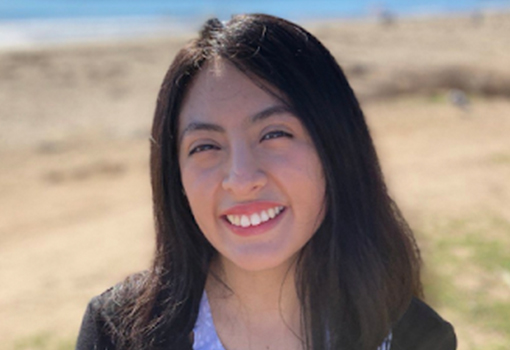
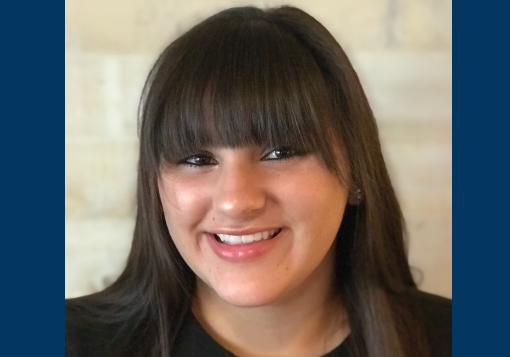
A second-year chemical engineering PhD student at UCSB, Victoria Diaz earned her bachelor’s degree in chemical engineering from CSU Long Beach. Co-advised by chemical engineering professors Michael Gordon and Bradley Chmelka, Diaz’s research is inspired by cephalopods, such as octopi, squid, and cuttlefish, and their unique ability to communicate with and camouflage their bodies by manipulating light in their skin. She is working to engineer a novel solid-state device for dynamically tunable photonic materials, which could be applied to different optical technologies by directly being able to tune and manipulate the color response of material on a bioinspired level. She is a proud recipient of the Racial Justice Fellowship, a program created at UCSB to promote a diverse student body from all disciplines on campus, who are dedicated to representing marginalized populations. During her academic career, Diaz has immersed herself in various student organizations, such as the American Institute of Chemical Engineers (AIChE), Mathematics, Engineering, Science Achievement (MESA), the Society of Women Engineers (SWE), and UCSB’s Society for Advancement of Chicanxs and Native Americans in Science (SACNAS) Graduate Chapter. She says that the organizations have allowed her to connect with other students who are focused on diversifying the STEM community and demonstrating that richly varied perspectives and lived experiences are what is needed to tackle today’s global issues. Diaz said that she often felt alone and suffered imposter syndrome during her academic journey, adding that on several occasions she felt discriminated against because of who she was as a Native American-Latina. This is why she believes that celebrating National Hispanic Heritage Month and recognizing everything the Latinx community has done to improve society is extremely important and helps students, like herself, know that they belong.
A first-generation college student, Steven Gomez Alvarado is a materials PhD student at UCSB. Gomez became interested in materials science while completing his bachelor’s degree in chemical engineering at UCLA. At the suggestion of a mentor, he enrolled in a materials science class and was “blown away” by how relevant the field was to solving grand challenges through clean energy, computing, and biotechnology. Advised by materials professor Stephen Wilson, Gomez Alvarado's research is focused on tuning magnetic and electronic properties in quantum materials through chemistry. He attributes his success to the resume advice, internships, professional workshops, networking, social events, and interview preparation he received while a member of UCLA’s Chapter of the Society of Hispanic Professional Engineers (SHPE). At UCSB, he is an officer for the Society for Advancement of Chicanxs and Native Americans in Science (SACNAS) Graduate Chapter, and he serves as the graduate advisor for the UCSB SHPE Chapter, known as Los Ingenieros, in order to pay it forward and help students understand what they need to do to get where they want to go. Gomez Alvarado encourages all students to become involved outside of the classroom by joining an organization, because they provide what aspiring engineers need to thrive as students: professional, social, academic, and leadership skills, all in one place. Gomez Alvarado has received the National Science Foundation’s prestigious Graduate Research Fellowship, as well as the GEM and Eugene Cota-Robles fellowships.

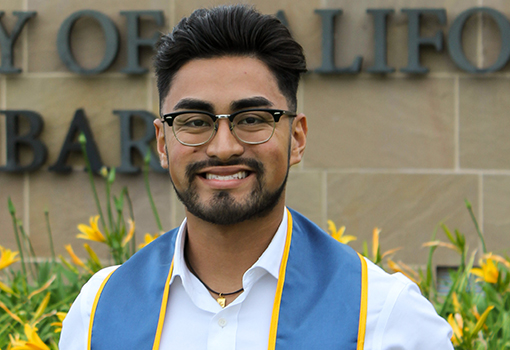
A first-generation college student, Jorge Gutierrez completed his bachelor’s degree in electrical engineering with a specialization in semiconductor and radio frequency engineering from UCSB in June 2023. He received the College of Engineering’s 2023 John and Sheila Lake Excellence Award, for demonstrating outstanding academic performance and an extraordinary level of engagement within the college. Gutierrez was an active member of the Mathematics, Engineering, Science, Achievement (MESA) Program and Los Ingenieros (LI), the UCSB student chapter of the Society of Hispanic Professional Engineers (SHPE), which prepares Hispanic students to succeed in college and become leaders in STEM. While in LI, he served on the executive board as the internal vice-president and co-chair, developing leadership and mentorship skills along the way. He said that he was proudest of the community service that he performed through LI, most notably, helping to raise more than $14,000 for MESA Day, the largest community outreach event hosted at UCSB for local Latinx and underrepresented students. He also mentored local middle school and high school students. He also participated in UC LEADS, a two-year program of scientific research and graduate school preparation, where he helped to optimize the mask layout that could eventually be used to fabricate transistors for microrobotic applications and solve medical conditions in the body. As part of his research, he presented his work in Puerto Rico during the 2022 National Diversity in STEM Conference hosted by the Society for Advancement of Chicanos/Hispanics and Native Americans in Science (SACNAS), the largest multidisciplinary and multicultural STEM diversity conference. Gutierrez also co-authored a research paper. He is now working as an associate hardware engineer at Northrop Grumman, taking part in a three-year rotational program called Pathways. His first assignment was at the corporation’s largest semiconductor fabrication facility.
José Hernández, a graduate of UCSB’s Electrical and Computer Engineering Department, went from working in the fields alongside his family — he did not learn to speak English until the age of 12 — to orbiting the Earth as a NASA astronaut. After earning his bachelor’s degree in electrical engineering from the University of the Pacific, Hernández earned a master’s degree from UCSB in 1986. He went on to work at the Lawrence Livermore National Laboratory, where he co-developed the first full-field digital mammography imaging system for early detection of breast cancer. Hernández entered NASA’s astronaut program in 2004, but only after he was accepted on his twelfth attempt. He spent fourteen days in space in 2009 as a flight engineer on board STS-128, a NASA Space Shuttle mission to the International Space Station. During the mission, he became the first person to send a tweet in Spanish from space. Hernández now runs his own aerospace company, working with companies like Boeing and Lockheed Martin, and he runs a non-profit to inspire youth to follow their dreams. In 2021, Gov. Gavin Newsom appointed Hernández to the University of California Board of Regents. In September 2023, Amazon Prime Video released A Million Miles Away, a biopic based on Hernández’s inspirational story, starring Michael Peña as the UCSB graduate.
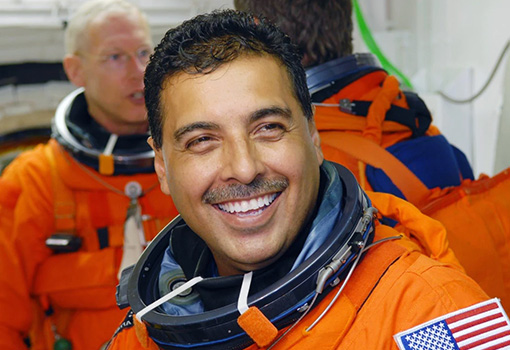

Scarlin Hernandez was born in the Dominican Republic and moved to Brooklyn with her family when she was four years old. After high school, she was awarded a full, four-year scholarship from the National Science Foundation to attend Capitol Technology University. Before earning a computer engineering degree, she started a Society of Women Engineers (SWE) chapter at the university. After graduation, Hernandez started working at NASA, where she is now a spacecraft engineer for NASA’s signature space mission, the James Webb Space Telescope (JWST). She wrote and tested codes for different systems that are used to command the JWST in space, maintaining its position and orientation. In July, NASA released the first full-color images from the world’s largest and most powerful space telescope, demonstrating the JWST’s power and ability to unfold the hidden universe.
Arturo Juan is a second-year materials PhD student at UCSB. The first-generation college student earned his bachelor’s degree in chemical engineering from the University of Southern California, and his master’s degree in electrical and computer engineering from UCSB. He worked in industry prior to entering the Materials PhD Program last fall. Juan is advised by Steven DenBaars, a distinguished professor of materials and electrical and computer engineering, and the focus of his research is the epitaxial growth of semiconductor materials via Metal-Organic Chemical Vapor Deposition (MOCVD) to make light-emitting materials that can be fabricated into laser diodes. These lasers can be used for fiber-optic communication systems, display technology, meteorology, spectroscopy, sensing applications, and medical use. During his academic career, Juan has been involved with the Society of Hispanic Professional Engineers (SHPE), and Queers in Engineering, Science and Technology (QuEST), and the Materials Student Association (MSA). He says that these supportive groups build a community for people having shared experiences and cultural values, which he has found extremely helpfule. Juan believes it is important to celebrate National Hispanic Heritage Month to raise awareness that, while Hispanics are united by a common tongue, they have many different cultures, all beautiful in their own way. He supports DEI initiatives in the engineering field, which he says lacks diversity, because they provide an opportunity for qualified, diverse, and underrepresented applicants to succeed and advance areas of research.

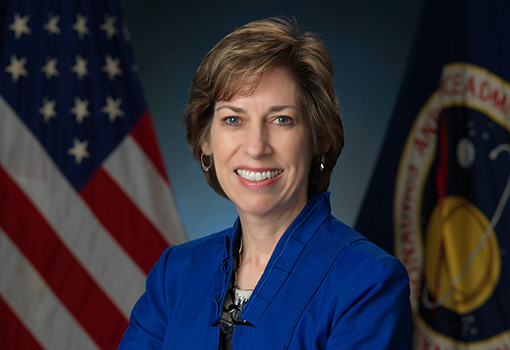
Ellen Ochoa has broken through many barriers in her career, including the Earth’s atmosphere. In 1991, after receiving a bachelor’s degree in physics from San Diego State and her master’s and PhD in electrical engineering from Stanford University, Ochoa was selected as NASA’s first female Hispanic astronaut. She completed four missions and spent more than nine hundred hours in space, using her knowledge about physics and engineering to work on flight hardware and software, robotics, and space station design, even inventing a new optical analysis system to detect defects in a repeating pattern. She was later promoted to director of the Johnson Space Center, becoming the first Hispanic director and only the second female director of the center. After retiring from the Johnson Space Center in 2018, she became vice chair of the National Science Board (NSB), which runs the National Science Foundation. She became NSB chair in 2020.
Daniel Oropeza joined UCSB’s Materials Department as an assistant professor in July 2023. His research focuses on developing materials and manufacturing technologies, while mapping correlations between process parameters, material microstructure, and component properties, to enable the next generation of structural and multi-functional materials. Daniel grew up in Mexico and Germany prior to immigrating to the United States with his family in the early 2000s. His enjoyment of math and science during his childhood, along with exposure to airplanes and spacecraft during air shows and museum visits in his childhood, led him to pursue bachelor’s degree in aerospace engineering from The University of Texas at Austin and later a master’s degree in aeronautics and astronautics from Stanford University. After working at Lockheed Martin for a few years, Daniel attended the Massachusetts Institute of Technology where he received his PhD in mechanical engineering. Later, he worked as a postdoctoral fellow in the Materials and Manufacturing Technology Research Group at NASA’s Jet Propulsion Laboratory. Daniel has mentored students from underrepresented minorities throughout his academic and professional career, serving as a graduate diversity ambassador and undergraduate research mentor at MIT, and volunteering for Big Brother Big Sisters and Project Lead the Way. He hopes to continue supporting and guiding students of all backgrounds toward STEM fields and advancing the field of materials and manufacturing of aerospace structures throughout his career.

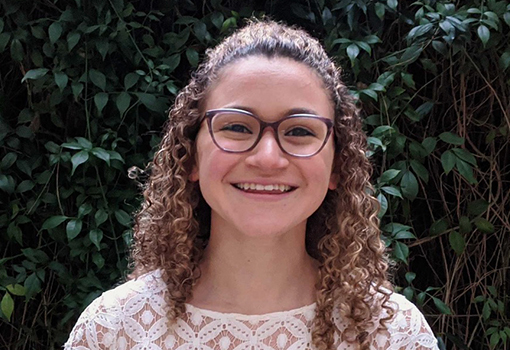
Daniela Rivera Mirabal is a third-year chemical engineering PhD student, who is co-advised by Rachel Segalman and Scott Shell. Born and raised in Puerto Rico, she earned a bachelor’s degree in chemical engineering from the University of Puerto Rico at Mayagüez (UPRM). Rivera Mirabal has been passionate about environmental sustainability since she was a child, and she decided to become an engineer in order to develop novel materials for environmental applications. A recipient of a National Science Foundation’s Graduate Research Fellowship, she performs atomistic simulations at UCSB to understand the molecular-level interactions of polymers. Her research is aimed at providing insight into how to leverage the chemistry of polymers to control their shape and properties. This work will guide the development of new materials having tunable properties for a wide set of applications. While at UPRM, Rivera Mirabal served as the vice president and board member of the university’s chapter of the Society of Hispanic Professional Engineers. She said that the organization gave her hope for the future and showed her how, with limited resources, their chapter could prepare students to succeed as professionals and widen the pipeline for Hispanic engineering students. She believes that STEM research is a powerful vehicle for change, and that different perspectives and life experiences are essential because they provide innovative solutions to existing problems.
Saiph Savage is an assistant professor at Northeastern University in the Khoury College of Computer Science. Savage earned a bachelor’s degree in computer engineering from the Universidad Nacional Automona de Mexico (UNAM), and received her master’s and PhD in computer science from UC Santa Barbara, where she was advised by computer science professor Tobias Höllerer. Recently, Savage received a grant from the National Science Foundation to study human-centered artificial intelligence to empower rural workers, being named one of the MIT Technology Review’s 35-Under-35 Innovators for her civic AI research. Savage was also recognized by UNESCO as being among the one hundred most impactful AI researchers in the world, being noted, especially, for how she is using AI to empower workers. She also holds several leadership positions, including as a committee member of the Latin American ACM SIGCHI, and as a technology policy fellow for the Center of Democracy and Technology and the Federation of American Scientists. Her research has been presented and adopted by presidencies in Latin America to drive better citizen-government collaborations. Previously, she worked at Intel Labs, Microsoft Bing, Carnegie Mellon University, the University of Washington, and West Virginia University.
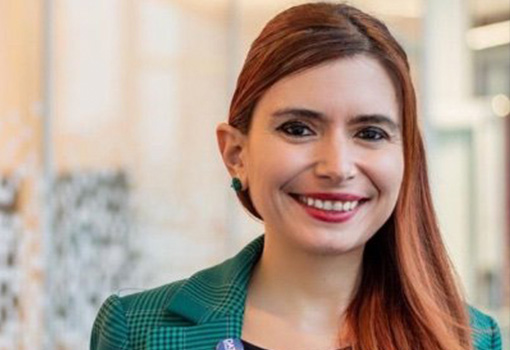
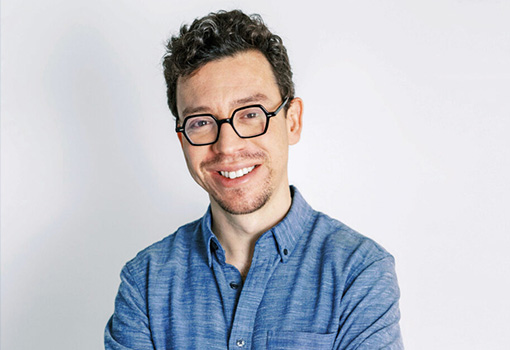
Born and raised in Guatemala City, Luis von Ahn received his first computer when he was eight years old. He went on to earn a bachelor’s degree in mathematics from Duke University and a PhD in computer science at Carnegie Mellon University, where he is now a faculty member. von Ahn is the co-creator of CAPTCHA, the challenge-response test used in computing to determine if the user is human to prevent spam and nefarious extraction from websites. In 2007, he created reCAPTCHA, using advanced risk-analysis techniques to tell humans and bots apart and protect websites from spam. Currently, von Ahn serves as the chief executive officer of Duolingo, a language education platform that he developed with a graduate student to make language education free and accessible to everyone. The platform offers nearly forty languages and has around forty million active users each month. During the COVID-19 pandemic, Duolingo moved up its global release of a literary app for young children. Duolingo ABC combats problems of global illiteracy and gives more children the opportunity for social mobility through learning to read and write in English.

